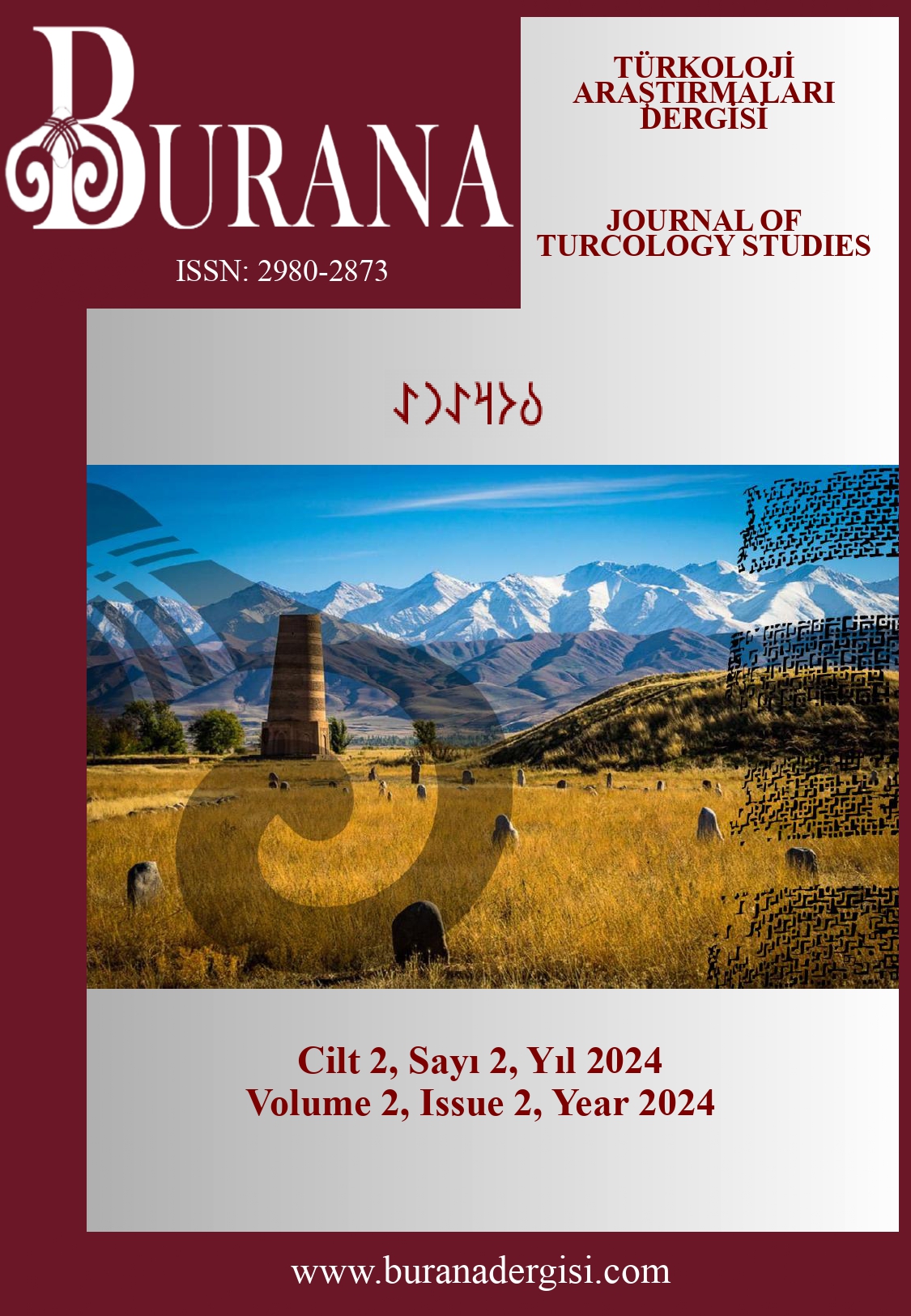Mention of the Kyrgyz in the work of Muhammad Haidar “Tarikh-i Rashidi”
DOI:
https://doi.org/10.5281/%20zenodo.14567845Keywords:
Historical Source, Ethnic Composition, Moghulistan, Moghuls, KyrgyzAbstract
“Tarikh-i Rashidi” is the most important historical source on the general history of Central Asia, reflecting the events of the XV-XVI centuries. Its author, Muhammad Haidar, was not only a historian but also a political figure, which gives the work special reliability and significance. This work contains interesting information about the Kyrgyz, Kazakhs, Uzbeks and other peoples of the region, and describes political events, ethnic processes and social life of the Turkic-Mongol tribes.
This article discusses translations of the Tarikh-i Rashidi and its use in studying the history of Kyrgyzstan and the Kyrgyz people. The work is particularly important for the study of the political and ethnic history of the Kyrgyz. It contains a wealth of information on the regions, ethnic composition and traditions of the peoples of Central Asia. The text emphasizes the interaction of the Kyrgyz with other Turkic and Mongol tribes, which helps to understand better the ethnic structure of the region and the history of inter-ethnic relations. The epithet “forest lions of Mongolia” applied by the author to the Kyrgyz emphasizes their bravery and militancy. The text also mentions important historical events in which the Kyrgyz participated, which makes the work a valuable source for studying their role in the political processes of Central Asia.
“Tarikh-i Rashidi” gives an opportunity to trace the ways of migration and formation of the tribes of Mogolistan, to reveal their political position and social relations. This article shows the importance of Muhammad Haidar's work in studying the history of Central Asia, including the Kyrgyz. This work serves as an important source for studying the ethnic history of the Kyrgyz and their relations with peoples of Turkic and Mongolian origin. The article emphasizes that Muhammad Haidar's work is still of interest to scholars and researchers due to the depth and diversity of information presented in it.
References
Abramzon, S. M. (1999). Kırgız cana Kırgızstan tarıhı boyunça tandalma emgekter. (S. Mambetaliev, D. Sulaymankulov, S. Makenov Kotor). Soros Fondu.
Bartold, V. V. (1963). Sobr. Soç.
Jemeney, İ. (2014). Tarih-i Reşidi: tercümeleri ve el yazma nüshalari hakkında. Gazi Türkiyat, 14, 21-27.
Karaev, O. K. (1995). Çagatayskiy ulus. Gosudarstvo Haydu.
Mamataliev, B. N. (2018). XIV-XVI kılımdarda Mogolistan mamleketindegi uruulardın bügünkü kırgız elinin kalıptanışındagı ordu cana rolu. Vestnik AN KR, 1.
Maşrapov, T. T. (1986). Tarihi Raşidi Mirza Haydara o ferganskih Kirgizah. Obşestvennıye nauki v Uzbekistane, 12, 44-46.
Mokeev, A. M. (2005). K voprosu proishojdenii rodoplemennogo obyedineniya Bulgaçi. Diyalog Tsivilizatsii, 1(6).
Muhammed, H. (1999). Tarihi Raşidi (Raşidova istoriya): perevod s persidskogo yazıka. Sanat.
Petrov, K. İ. (1963). Oçerk proishojdeniye kirgizskogo naroda. İzdatelstvo Akadem Nauk Kirg.
Pişulina, K. A. (1977). Yugo-vostoçnıy Kazahstan v seredine XIV – naçale XVI vekov (voprosı politiçeskoy i sotsialno-ekonomiçeskoy istorii). Nauka.
The Tarikh-i-Rashidi of Mirza Muhammad Haidar Duglat. (1895). The History of the Moghuls of Central Asia. Commentary, Notes and Map.
Yudin, V. P. (1965). O rodoplemennom sostave mogulov Mogulistana i Mogulii i ih etniçeskiye svyazi s kazahami i drugimi sosednimi narodami. İzvestiye AN Kaz, 3, 52-65.
Yudin, V. P. (2001). Tsentralnaya aziya v XIV- XVIII vekah glazami. Dayk-Press.
Downloads
Published
How to Cite
Issue
Section
License
Copyright (c) 2024 BURANA - Journal of Turcology Studies

This work is licensed under a Creative Commons Attribution 4.0 International License.


